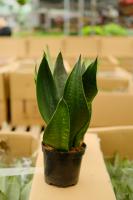Can You Transplant Big Tomato Plants?
Transplanting tomato plants is a common practice among gardeners. It involves moving the young tomato plants from one location to another to provide them better growing conditions. However, transplanting big tomato plants can be challenging, and many gardeners wonder if it is possible to do so without harming the plants. In this article, we will explore the steps to transplant big tomato plants successfully.
When to Transplant Tomato Plants?
The best time to transplant tomato plants is when they are still small and growing with a few sets of leaves. Moving them at this stage will allow the roots to establish themselves in the new location more comfortably. However, if you have big tomato plants, you can still transplant them but with some extra care.
Prepare the Site for Transplanting
Before you prepare to transplant the big tomato plants, you must choose an ideal site. The new site should have well-draining soil, plenty of sunlight, and protection from harsh winds. Ideally, the soil should have a pH level between 6.0 and 6.8, and must be rich in organic matter. Once you have selected the site, it's time to prepare the soil by adding compost, bone meal, and other slow-release fertilizers to boost the plant's growth.
Transplant the Tomato Plants
Now that you have prepared the site, it's time to transplant the big tomato plants. Here's how you can do it:
Water the plants to ensure that the soil is moist and easy to move.
Dig a hole in the new location that is at least twice the size of the root ball of your tomato plant. Make sure to space the holes at least 24 inches apart to provide enough room for the plants to grow.
Carefully dig around the base of the tomato plant, taking care not to damage the roots or stem. If the roots are tangled, gently loosen them with your fingers or a blunt tool.
Place the plant in the hole and backfill the soil around it, making sure to press it lightly to remove any air pockets.
Water the plant thoroughly, making sure that the soil is evenly moist.
Caring for Transplanted Tomato Plants
After transplanting, tomato plants require extra care to ensure that they continue to grow and thrive in their new location. Here are some tips to help you care for your transplanted tomato plants:
Water the plants regularly to keep the soil moist but not saturated.
Fertilize the plants with a balanced fertilizer every two weeks to encourage growth.
Prune the plants to remove any damaged or diseased parts and to maintain their shape.
Provide support to the plants by staking or caging them to prevent them from falling over.
Conclusion
Transplanting big tomato plants can be challenging, but with the right preparatory steps, it's entirely possible. By choosing the right site, digging the holes correctly, and investing in the right care and feeding, you can help your plants thrive in their new environment.

 how many times do yo...
how many times do yo... how many planted tre...
how many planted tre... how many pine trees ...
how many pine trees ... how many pecan trees...
how many pecan trees... how many plants comp...
how many plants comp... how many plants can ...
how many plants can ... how many plants and ...
how many plants and ... how many pepper plan...
how many pepper plan...































